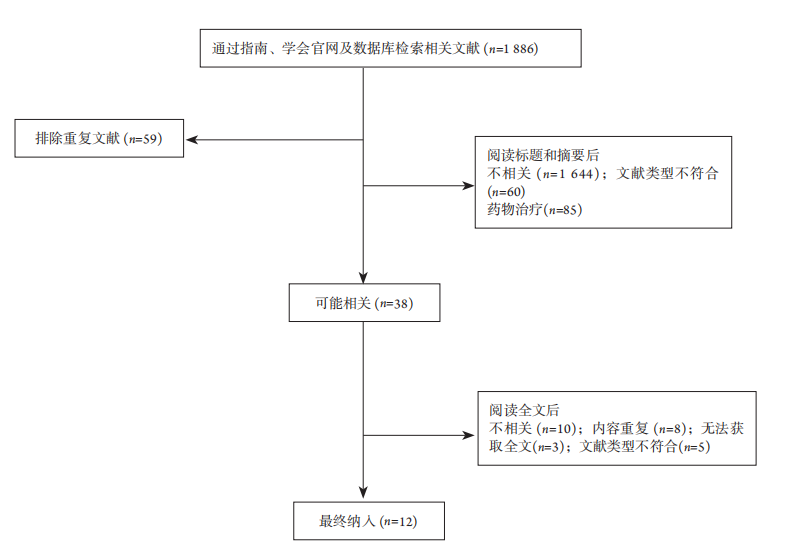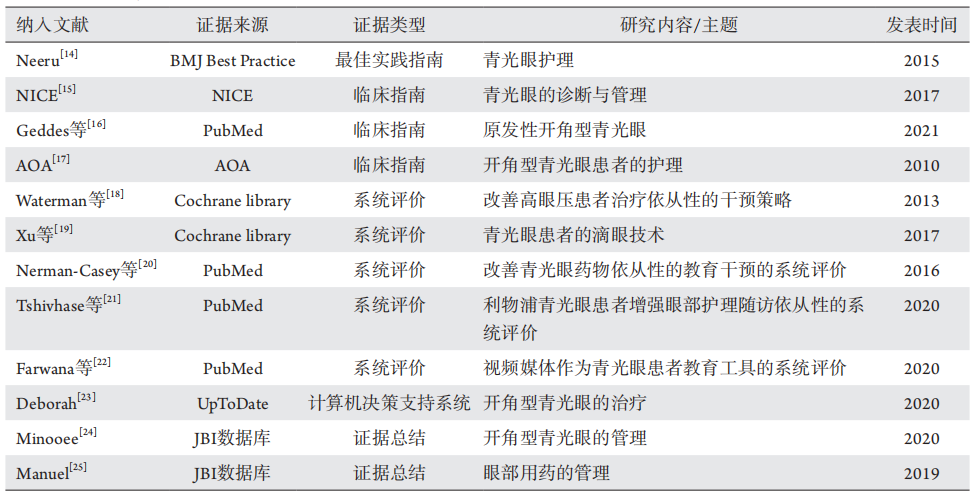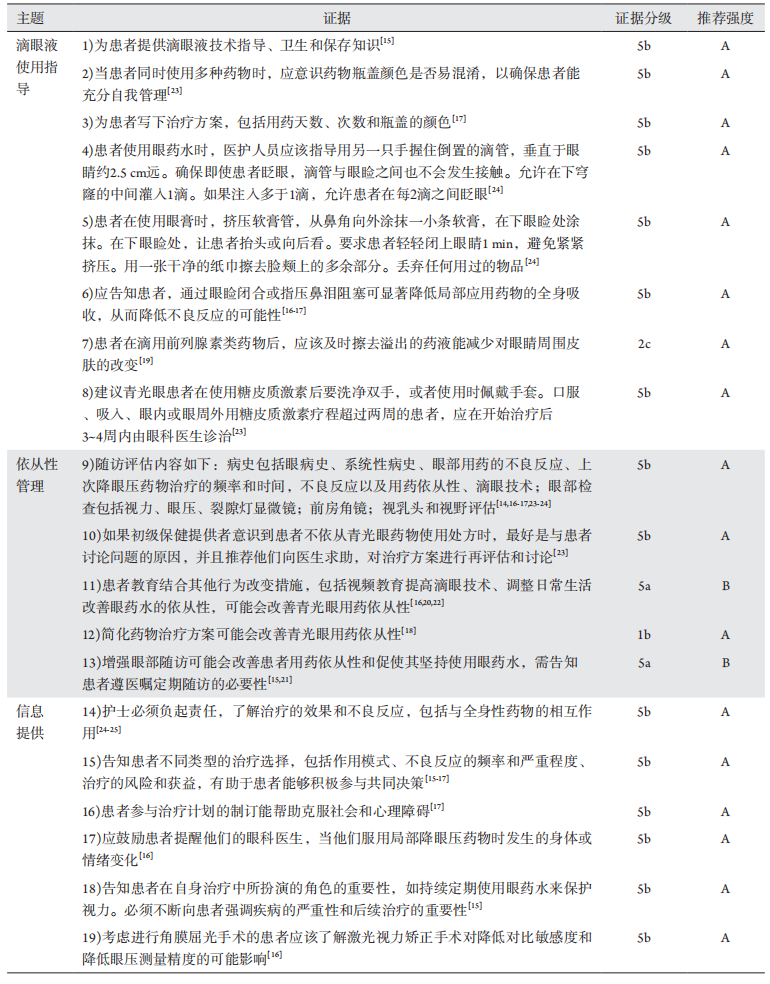1、任霞, 贺经, 冯延琴. 原发性开角型青光眼治疗进展[ J]. 国际眼科杂志, 2016, 16(3): 458-461.
REN X, HE J, FENG YQ, Progress on diagnosis and treatment of primary open angle glaucoma[ J]. International Eye Science, 2016, 16(3): 458-461.任霞, 贺经, 冯延琴. 原发性开角型青光眼治疗进展[ J]. 国际眼科杂志, 2016, 16(3): 458-461.
REN X, HE J, FENG YQ, Progress on diagnosis and treatment of primary open angle glaucoma[ J]. International Eye Science, 2016, 16(3): 458-461.
2、唐静, 邓应平, 王琼, 等. 原发性开角型青光眼发病机制的研究进展[ J]. 眼科新进展, 2020, 40(6): 587-592.
TANG J, DENG YP, WANG Q, et al. Research advances on the pathogenesis of primary open angle glaucoma[ J]. Recent Advances in Ophthalmology, 2020, 40(6): 587-592.唐静, 邓应平, 王琼, 等. 原发性开角型青光眼发病机制的研究进展[ J]. 眼科新进展, 2020, 40(6): 587-592.
TANG J, DENG YP, WANG Q, et al. Research advances on the pathogenesis of primary open angle glaucoma[ J]. Recent Advances in Ophthalmology, 2020, 40(6): 587-592.
3、Beidoe G, Mousa SA. Current primary open-angle glaucoma treatments and future directions[ J]. Clin Ophthalmol, 2012, 6: 1699-1707.Beidoe G, Mousa SA. Current primary open-angle glaucoma treatments and future directions[ J]. Clin Ophthalmol, 2012, 6: 1699-1707.
4、Schwartz GF, Hollander DA, Williams JM. Evaluation of eye drop administration technique in patients with glaucoma or ocular hypertension[ J]. Curr Med Res Opin, 2013, 29(11): 1515-1522.Schwartz GF, Hollander DA, Williams JM. Evaluation of eye drop administration technique in patients with glaucoma or ocular hypertension[ J]. Curr Med Res Opin, 2013, 29(11): 1515-1522.
5、Tatham A J, Sarodia U, Gatrad F, et al. Eye drop instillation technique in patients with glaucoma[ J]. Eye (Lond), 2013, 27(11): 1293-1298.Tatham A J, Sarodia U, Gatrad F, et al. Eye drop instillation technique in patients with glaucoma[ J]. Eye (Lond), 2013, 27(11): 1293-1298.
6、Davis SA , Carpenter DM, Blalock SJ, et al. Glaucoma patient preferences for video education on eye drop technique[ J]. Optom Vis Sci, 2019, 96(5): 325-330Davis SA , Carpenter DM, Blalock SJ, et al. Glaucoma patient preferences for video education on eye drop technique[ J]. Optom Vis Sci, 2019, 96(5): 325-330
7、Freddo TF, Ho DY, Steenbakkers M, et al. Validation of a more reliable method of eye drop self-administration[ J]. Optom Vis Sci, 2020, 97(7): 496-502.Freddo TF, Ho DY, Steenbakkers M, et al. Validation of a more reliable method of eye drop self-administration[ J]. Optom Vis Sci, 2020, 97(7): 496-502.
8、Newman-Casey PA, Niziol LM, Gillespie BW, et al. Patterns of glaucoma medication adherence over four years of follow-up[ J]. Ophthalmology, 2015, 122(10): 2010-2021.Newman-Casey PA, Niziol LM, Gillespie BW, et al. Patterns of glaucoma medication adherence over four years of follow-up[ J]. Ophthalmology, 2015, 122(10): 2010-2021.
9、Newman-Casey PA, Niziol LM, Gillespie BW, et al. The association between medication adherence and visual field progression in the collaborative initial glaucoma treatment study[ J]. Ophthalmology, 2020, 127(4): 477-483.Newman-Casey PA, Niziol LM, Gillespie BW, et al. The association between medication adherence and visual field progression in the collaborative initial glaucoma treatment study[ J]. Ophthalmology, 2020, 127(4): 477-483.
10、周芬, 郝玉芳, 丛雪, 等. 指南研究与评价工具AGREE II及各领域分值的补充解释及思考[ J]. 护理学报, 2018, 25(18): 56-58.
ZHOU F, HAO YF , CONG X, et al. Supplementar y explanations and reflections on the scores in various fields of the appraisal of guidelines for research & evaluation, AGREE II[ J]. Journal of Nursing, 2018, 25(18): 56-58.周芬, 郝玉芳, 丛雪, 等. 指南研究与评价工具AGREE II及各领域分值的补充解释及思考[ J]. 护理学报, 2018, 25(18): 56-58.
ZHOU F, HAO YF , CONG X, et al. Supplementar y explanations and reflections on the scores in various fields of the appraisal of guidelines for research & evaluation, AGREE II[ J]. Journal of Nursing, 2018, 25(18): 56-58.
11、顾莺, 张慧文, 周英凤, 等. JBI循证卫生保健中心关于不同类型研究的质量评价工具——系统评价的方法学质量评价[ J]. 护士进修杂志, 2018, 33(8): 701-703.
GU Y, ZHANG HW, ZHOU YF, et al. JBI evidence-based health centei^s quality assessment tool for different types of research—The quality evaluation of diagnostic and economic evaluation[ J]. J Nurs Train, 2018, 33(8): 701-703.顾莺, 张慧文, 周英凤, 等. JBI循证卫生保健中心关于不同类型研究的质量评价工具——系统评价的方法学质量评价[ J]. 护士进修杂志, 2018, 33(8): 701-703.
GU Y, ZHANG HW, ZHOU YF, et al. JBI evidence-based health centei^s quality assessment tool for different types of research—The quality evaluation of diagnostic and economic evaluation[ J]. J Nurs Train, 2018, 33(8): 701-703.
12、王春青, 胡雁. JBI证据预分级及证据推荐级别系统(2014版)[ J]. 护士进修杂志, 2015, 30(11): 964-967.
WANG CQ, HU Y. The Joanna Briggs Institute levels of Evidence and Grades of Recommendation (2014)[ J]. Journal of Nurses Training, 2015, 30(11): 964-967.王春青, 胡雁. JBI证据预分级及证据推荐级别系统(2014版)[ J]. 护士进修杂志, 2015, 30(11): 964-967.
WANG CQ, HU Y. The Joanna Briggs Institute levels of Evidence and Grades of Recommendation (2014)[ J]. Journal of Nurses Training, 2015, 30(11): 964-967.
13、米元元, 沈月, 郝彬, 等. ICU患者肠内营养支持并发腹泻的循证护理实践[ J]. 中华护理杂志, 2017, 52(11): 1291-1298.
MI YY, SHEN Y, HAO B, et al. Evidence-based nursing practice of enteral nutrition support among ICU patients
with diarrhea[ J]. Chinese Journal of Nursing, 2017, 52(11): 1291-1298.米元元, 沈月, 郝彬, 等. ICU患者肠内营养支持并发腹泻的循证护理实践[ J]. 中华护理杂志, 2017, 52(11): 1291-1298.
MI YY, SHEN Y, HAO B, et al. Evidence-based nursing practice of enteral nutrition support among ICU patients
with diarrhea[ J]. Chinese Journal of Nursing, 2017, 52(11): 1291-1298.
14、International Council of Ophthalmology. ICO guidelines for glaucoma eye care[EB/OL]. [2022-04-05].http://www.glaucomaclinic.com/wp-content/uploads/2016/12/ICOGlaucomaGuidelines.pdf.International Council of Ophthalmology. ICO guidelines for glaucoma eye care[EB/OL]. [2022-04-05].http://www.glaucomaclinic.com/wp-content/uploads/2016/12/ICOGlaucomaGuidelines.pdf.
15、National Institute for Health and Care Excellence. Glaucoma: diagnosis and management[EB/OL]. [2022-04-05].https://www.nice.org.uk/guidance/ng81.National Institute for Health and Care Excellence. Glaucoma: diagnosis and management[EB/OL]. [2022-04-05].https://www.nice.org.uk/guidance/ng81.
16、Gedde SJ, Vinod K, Wright MM, et al. Primary open-angle glaucoma preferred practice Pattern?[ J]. Ophthalmology, 2021, 128(1): P71-P150.Gedde SJ, Vinod K, Wright MM, et al. Primary open-angle glaucoma preferred practice Pattern?[ J]. Ophthalmology, 2021, 128(1): P71-P150.
17、American Optometric Association. Care of the patient with open angle glaucoma[EB/OL]. [2022-04-05].https://www.aoa.org/AOA/Documents/Practice Management/Clinical Guidelines/Consensus-based guidelines/Care of the Patient with Open Angle Glaucoma.pdf.American Optometric Association. Care of the patient with open angle glaucoma[EB/OL]. [2022-04-05].https://www.aoa.org/AOA/Documents/Practice Management/Clinical Guidelines/Consensus-based guidelines/Care of the Patient with Open Angle Glaucoma.pdf.
18、Waterman H, Evans JR, Gray TA, et al. Interventions for improving adherence to ocular hypotensive therapy[ J]. Cochrane Database Syst Rev, 2013(4): CD006132.Waterman H, Evans JR, Gray TA, et al. Interventions for improving adherence to ocular hypotensive therapy[ J]. Cochrane Database Syst Rev, 2013(4): CD006132.
19、Xu L, Wang X, Wu M. Topical medication instillation techniques for glaucoma[ J]. Cochrane Database Syst Rev, 2017, 2: CD010520.Xu L, Wang X, Wu M. Topical medication instillation techniques for glaucoma[ J]. Cochrane Database Syst Rev, 2017, 2: CD010520.
20、Newman-Casey PA , Dayno M, Robin AL. Systematic rev iew of educational interventions to improve glaucoma medication
adherence: an update in 2015[ J]. Expert Rev Ophthalmol, 2016, 11(1): 5-20.Newman-Casey PA , Dayno M, Robin AL. Systematic rev iew of educational interventions to improve glaucoma medication
adherence: an update in 2015[ J]. Expert Rev Ophthalmol, 2016, 11(1): 5-20.
21、Tshivhase S. Systematic literature review on strengthening eye care follow-up among glaucoma patients in Limpopo Province[ J]. Open Public Health J, 2020, 13(1): 134-143.Tshivhase S. Systematic literature review on strengthening eye care follow-up among glaucoma patients in Limpopo Province[ J]. Open Public Health J, 2020, 13(1): 134-143.
22、Farwana R, Sheriff A, Manzar H, et al. Watch this space: a systematic review of the use of video-based media as a patient education tool in ophthalmology[ J]. Eye (Lond), 2020, 34(9): 1563-1569.Farwana R, Sheriff A, Manzar H, et al. Watch this space: a systematic review of the use of video-based media as a patient education tool in ophthalmology[ J]. Eye (Lond), 2020, 34(9): 1563-1569.
23、Jacobs%20DS.%20Open-angle%20glaucoma%3A%20Treatment%5B%20J%2FOL%5D.%20(2020-03-19)%20%5B2021-11-20%5D.https%3A%2F%2Fwww.uptodate.com%2Fcontents%2Fopen%02angle-glaucoma-treatment%3Fsearch%3DOpen-angle%2520glaucoma%3A%2520Treatment%26source%3Dsearch_result%26selectedTitle%3D1~150%26usage_type%3Ddefault%26display_rank%3D1Jacobs%20DS.%20Open-angle%20glaucoma%3A%20Treatment%5B%20J%2FOL%5D.%20(2020-03-19)%20%5B2021-11-20%5D.https%3A%2F%2Fwww.uptodate.com%2Fcontents%2Fopen%02angle-glaucoma-treatment%3Fsearch%3DOpen-angle%2520glaucoma%3A%2520Treatment%26source%3Dsearch_result%26selectedTitle%3D1~150%26usage_type%3Ddefault%26display_rank%3D1
24、Minooee S. Evidence summary. Open angle glaucoma: Management[Z]. The Joanna Briggs Institute EBP Database, JBI@Ovid. 2020; JBI18044.Minooee S. Evidence summary. Open angle glaucoma: Management[Z]. The Joanna Briggs Institute EBP Database, JBI@Ovid. 2020; JBI18044.
25、Manuel B. Evidence Summary. Medication (Ocular): Administration[Z]. The Joanna Briggs Institute EBP Database, JBI@Ovid. 2019; JBI220.Manuel B. Evidence Summary. Medication (Ocular): Administration[Z]. The Joanna Briggs Institute EBP Database, JBI@Ovid. 2019; JBI220.






